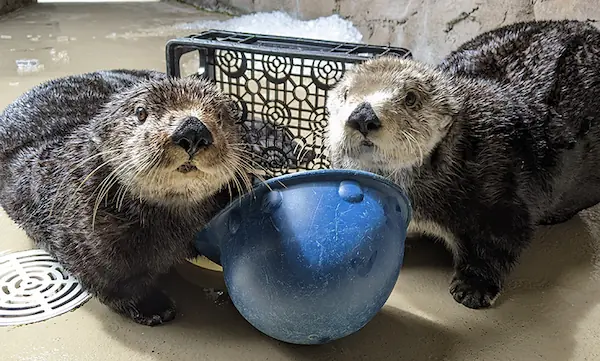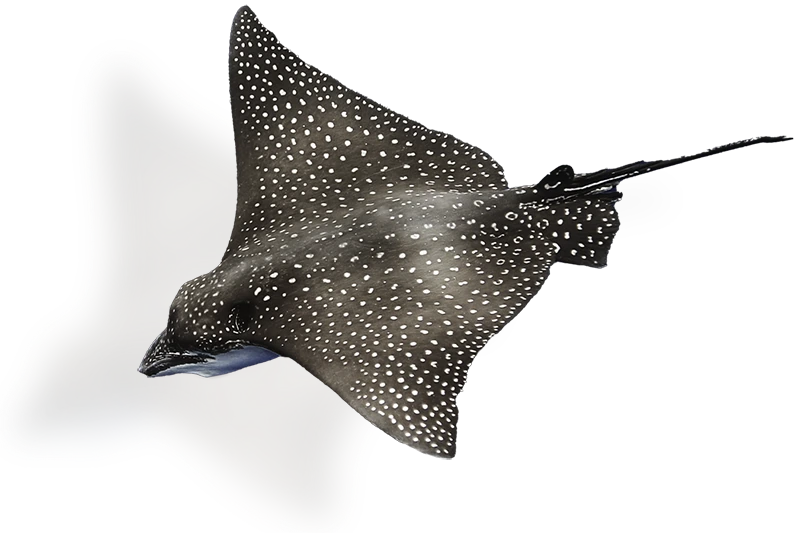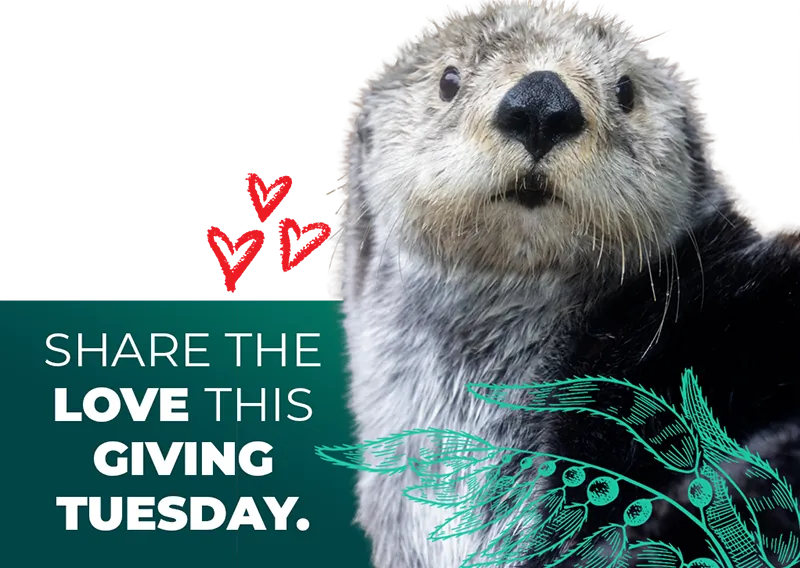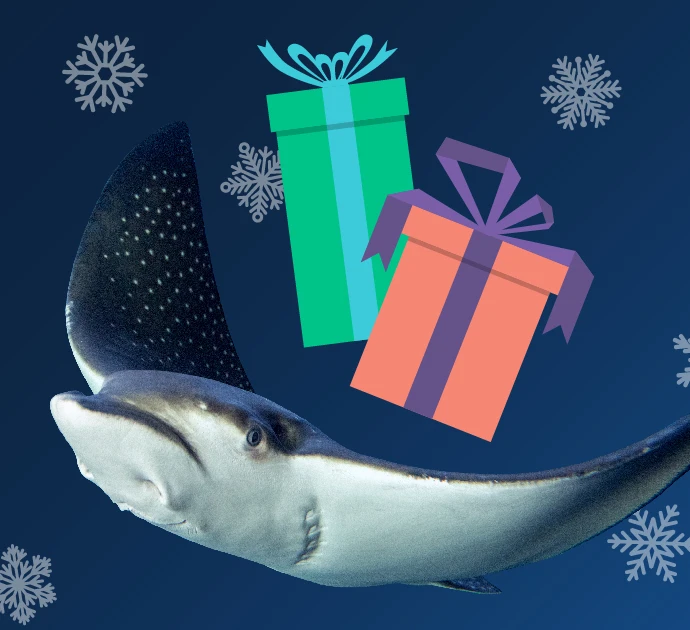It takes a lot of work—not to mention time—to get living systems like the Ocean Pavilion’s habitats ready to welcome new animals. On the surface, it might seem simple: make a plan, construct the habitats, fill them with water, move the animals in and you’re done, right? Not surprisingly, it’s far more complex than that (read our web story to take a deeper dive).
For this story, we’re going to focus on a particular aspect of preparing the habitats for new animals—one that involves everyone’s favorite topic: poop! But first, some background.
Get your wheels turning on cycling
Cycling in the world of aquariums is different from biking around your neighborhood. It refers to the process of building a population of beneficial bacteria that make an aquarium habitat ready for animals.
The Ocean Pavilion’s habitats are filled with fascinating sharks, rays and schooling fish—and guess what accompanies them? You guessed it: poop (and pee).
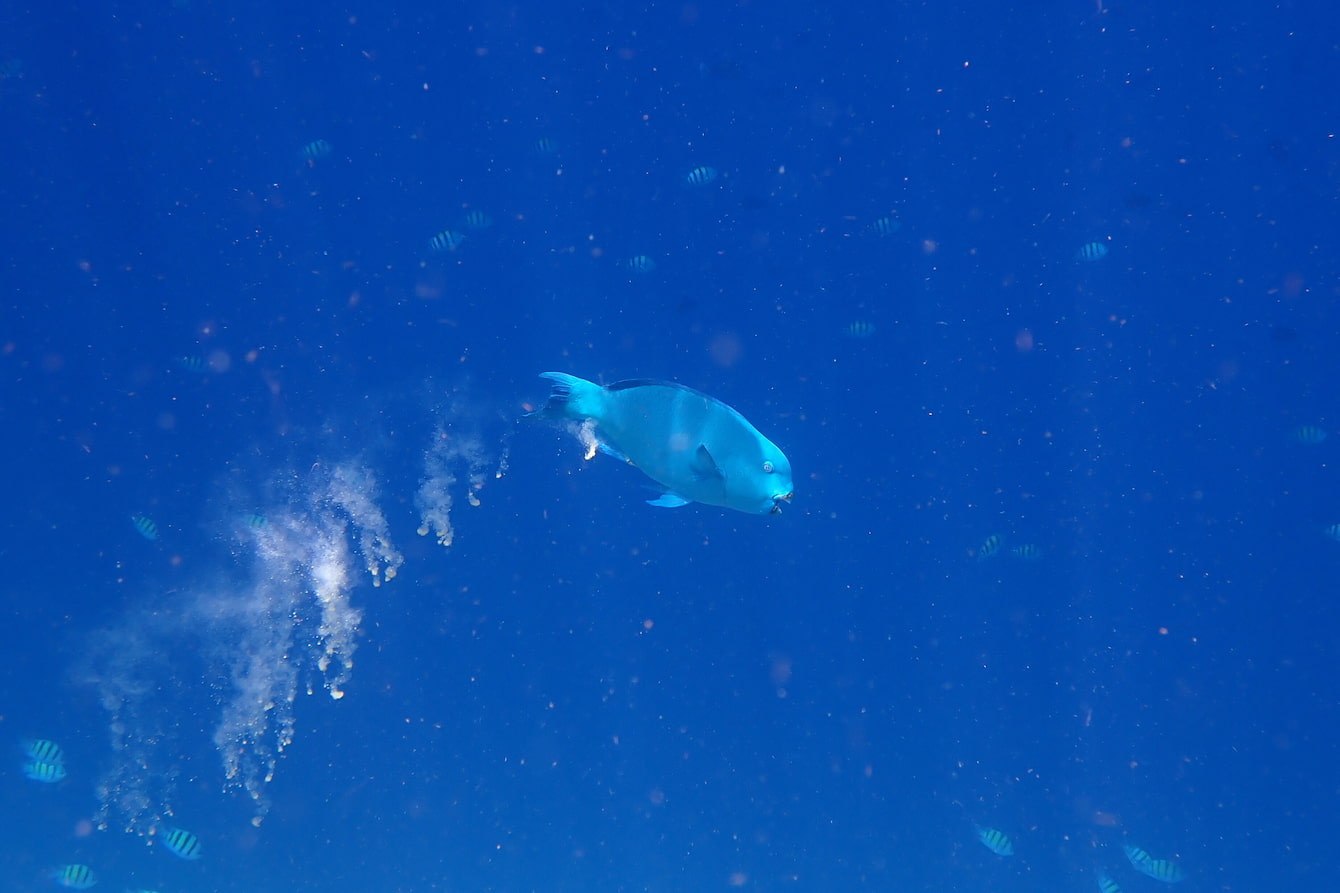
While we humans have bathrooms to get rid of our wastes, aquatic animals swim in the very same water with them. Bacteria to the rescue! It’s the key to getting rid of those wastes and keeping the water healthy for all the animals in the habitats. And it has to be present, by the millions, before any fish and invertebrates can move in.
Bacteria, bacterium? The word bacteria is plural—meaning multiple organisms. Bacterium is the word for a single organism.
Bacteria don't deserve the bad rap
Although they’re commonly made out to be villains, associated with infections and disease, bacteria can also be superheroes. The populations in the Ocean Pavilion fall into that category.
How come? Because they oxidize* and break down toxic nitrogen, which comes from ammonia in animal wastes, into less toxic forms: nitrite and, eventually, nitrate. That’s why they’re referred to as beneficial bacteria.
These bacteria do important—but slow—work and also have needs of their own. First, the temperature needs to be just right. They like it warm. And, because they don’t float freely in the water, they need surfaces on which to live.
*Put very simply, oxidizing is like bacteria’s version of eating—similar to the way we humans eat and break down food.
Enter bio balls
Bio balls are small orbs, just about an inch in diameter, that offer plenty of surface area for the beneficial bacteria to settle on and grow. Here at the Aquarium, we placed nearly half a million bio balls in a holding pool, then jumpstarted the typically slow bacterial growth process by adding nitrogen (aka bacteria food) to the water.
When the time was right, our team loaded bio balls into sacks and transplanted them to habitats in the Ocean Pavilion to continue the growth process (see how it worked in our video). This method helped reduce the overall cycling time—meaning that we could welcome animals to the habitats that much sooner.
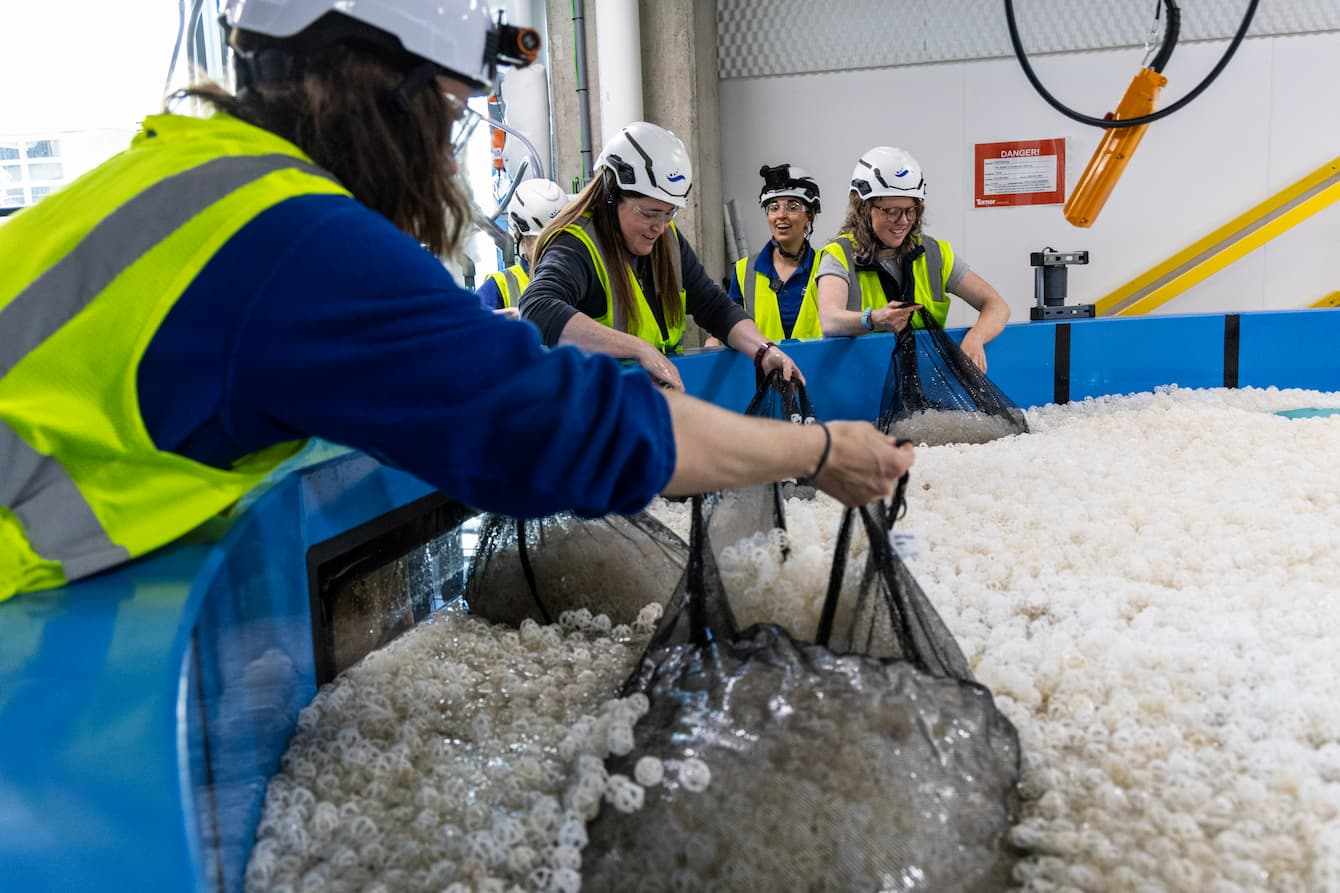
Throughout the entire process, our water quality team kept feeding nitrogen to the bacteria, not only to help them grow, but also to help them get very familiar with animal pee and poop. (Luckily for our team, the nitrogen they used is less messy than actual pee and poop; it’s a fine, white powder.)
When the water quality team determines that the habitat is ready, animals move in and take over the process.
Ultra-nerdy details
How does the water quality team know that the habitat is ready and the bacteria are populating the way we need them to? They start by testing for nitrogen—which, as you’ll remember, is serving as a proxy for animal waste—in the water.
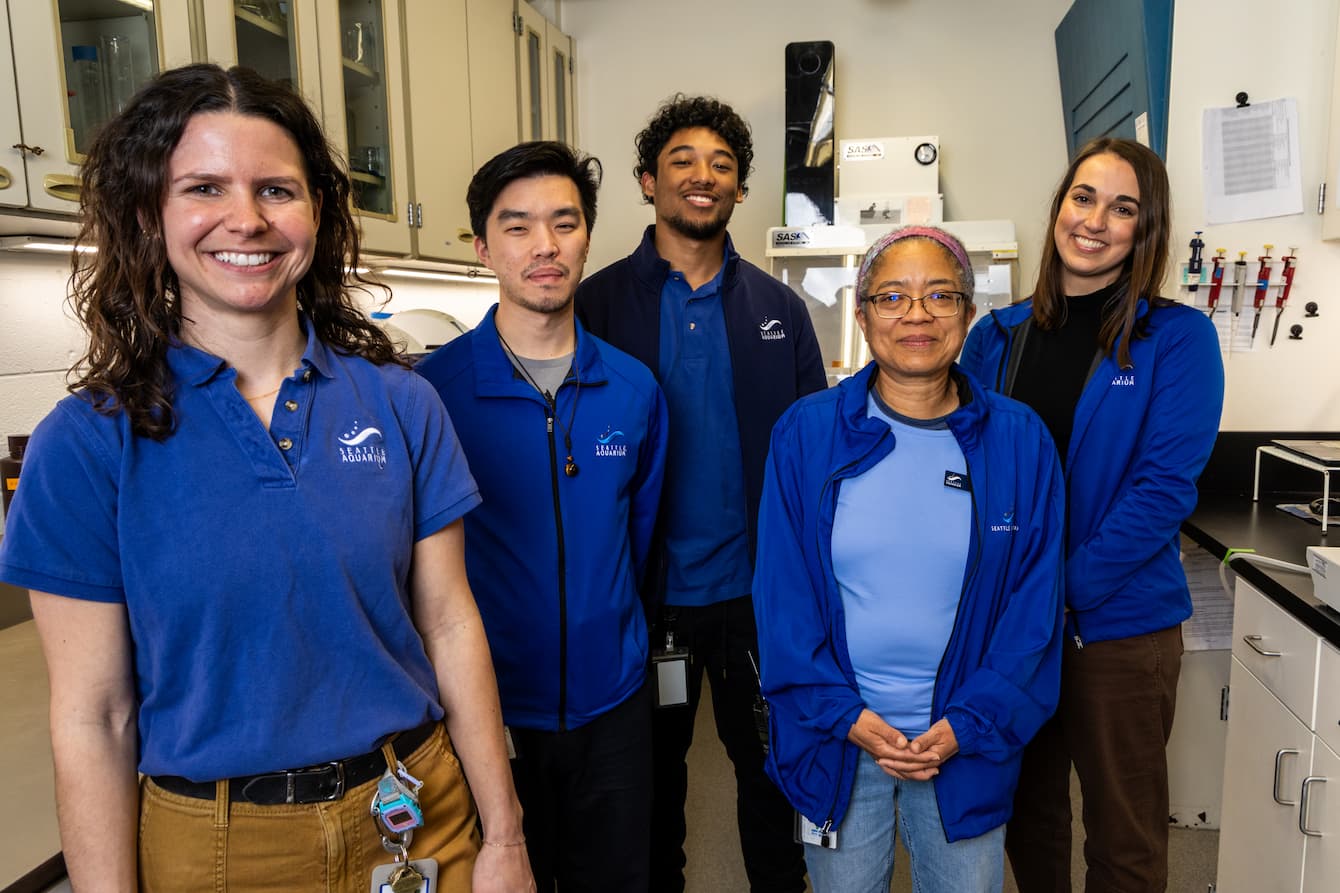
If the team adds nitrogen to the water, tests it and discovers the same amount is still there, they know that the bacteria haven’t populated yet. A decrease shows that the bacteria are consuming the nitrogen.
And that’s just the beginning! As mentioned above, the bacteria break down nitrogen into nitrite and, eventually, nitrate. So the team also tests for nitrite. A decrease in ammonia followed by a spike in nitrite tells them that the bacteria are doing exactly what they’re supposed to.
This process takes time and involves many rounds of testing to ensure the bacteria are thriving and ready to eat their fill of waste. Each habitat in the Ocean Pavilion has hosted thousands of bio balls, doing their good work in preparation for the arrival of schooling fish, skates, rays, sharks and more. Pee and poop: it’s what’s for dinner!
We're there even though you can't see us
While the bacteria that do all this good work aren’t visible to the naked eye, you know what is? All the incredible animals that depend on them for a healthy, clean habitat. Plan a visit to explore the Ocean Pavilion today!
